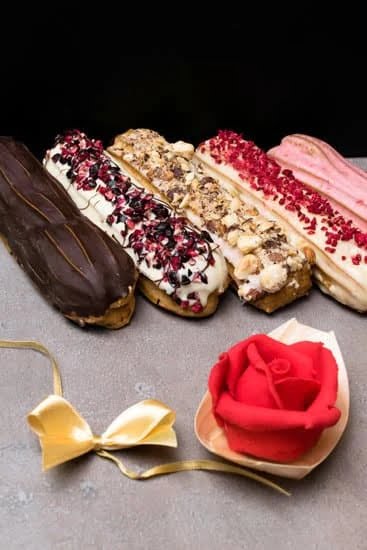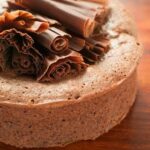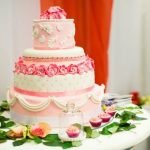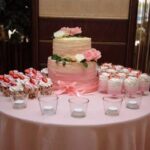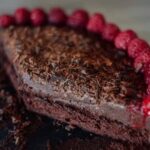Chess board cakes have become increasingly popular in recent years, captivating both avid chess players and dessert enthusiasts alike. These captivating creations not only showcase a visually stunning chess board pattern but also offer a delicious treat for any occasion. From birthday parties to game nights, a well-decorated chess board cake serves as the centerpiece that combines artistry and culinary delight.
The appeal of chess-themed cakes lies in their ability to merge two distinct worlds – the strategic and sophisticated game of chess with the deliciousness of a meticulously crafted dessert. The juxtaposition of structured black and white squares on a cake creates an eye-catching design that is sure to impress guests. Whether you are hosting a chess-themed event or simply looking for a unique cake design, the allure of a chess board cake is undeniable.
To achieve an exquisite chess board cake, various key techniques come into play. The process involves gathering the necessary ingredients and tools, selecting complementary flavors, preparing and baking the cake base, creating the intricate chess board pattern, mastering edible chess piece decorations, adding finishing touches, and presenting it all in an appealing manner.
In the following sections, we will delve deeper into each stage of this creative journey to guide you in your quest for mastering the art of decorating a captivating chess board cake.
Gathering the ingredients and tools
When it comes to creating a stunning chess board cake, gathering the right ingredients and tools is essential. This section will guide you through the process of collecting everything you need to bring your chess-themed creation to life.
To start, you will need the necessary ingredients for the cake base and frosting. For a traditional chess board look, consider using a combination of chocolate and vanilla flavors. You will also require flour, sugar, eggs, butter, baking powder, salt, milk, cocoa powder (for the chocolate portion), and vanilla extract. Ensure that you have enough of each ingredient for the desired cake size.
In addition to the ingredients, you will need chess board pattern stencils or templates. These are crucial for achieving clean and precise lines on your cake. If you cannot find pre-made stencils or templates, consider creating your own by using a ruler and cutting out squares from parchment paper or thin cardboard.
Next, make sure you have all the essential tools for cake decorating. A piping bag and various tips will come in handy for adding decorative elements or a border to your cake. An offset spatula is useful for smoothing frosting and creating straight edges. A cake leveler is essential for ensuring an even surface when layering your cake.
By gathering all the necessary ingredients and tools beforehand, you’ll be well-prepared to embark on your chess board cake decorating adventure. The next section will cover choosing the perfect flavors that complement the chess theme to enhance your creation even further.
Choosing the perfect flavors for a chess board cake
When it comes to choosing the flavors for a chess board cake, there are numerous options that can complement the chess theme and elevate the taste experience. One popular choice is to go with classic chocolate and vanilla flavors, which not only serve as a blank canvas for decorating but also provide a delightful contrast on the palate.
For chocolate lovers, a rich and moist chocolate cake base with layers of chocolate ganache or fudge frosting can be an indulgent treat. Alternatively, a vanilla-based recipe can offer a lighter option that allows the focus to be on the decorated chess board pattern.
To further accentuate the flavors of the chess board cake, consider incorporating fillings or layered frostings between the cake layers. For instance, a raspberry or strawberry filling can add a fruity burst of sweetness to complement either the chocolate or vanilla base. Additionally, a cookies and cream filling made with crushed Oreos mixed into a light buttercream frosting could replicate the look of chess pieces on top of the cake.
For those who want to experiment with more unique flavor combinations, there are plenty of possibilities. One idea is to use coffee-flavored sponge cakes layered with mocha buttercream for an elegant twist on traditional flavors.
Another option is to infuse citrus flavors by making lemon or orange-flavored cakes paired with tangy cream cheese frosting. The choice of flavors ultimately depends on personal preference and creativity, allowing you to tailor your chess board cake to suit any occasion or individual’s taste.
As with any baking endeavor, it is important to consider dietary restrictions or preferences when selecting flavors for a chess board cake. For example, if you are catering to individuals who follow a gluten-free diet, you can explore gluten-free alternatives like almond flour or coconut flour for your cake base. Similarly, you can make vegan-friendly adaptations by using plant-based milk and replacing eggs with ingredients like applesauce or flax eggs.
Preparing and baking the cake base
Step-by-step instructions for baking a moist and firm cake base
To create the perfect chess board cake, it is important to start with a moist and firm cake base that can support the weight of the decorations. Here is a step-by-step guide on how to prepare and bake the cake base:
- Preheat your oven to the temperature specified in your chosen recipe. It is essential to follow the recipe precisely to ensure proper baking.
- Grease and flour your cake pans or line them with parchment paper for easy removal later.
- In a mixing bowl, combine all the dry ingredients specified in your recipe, such as flour, sugar, baking powder, and salt. Mix well to ensure even distribution of ingredients.
- In another bowl, whisk together all the wet ingredients like eggs, oil, milk, and vanilla extract until well combined.
- Gradually pour the wet ingredient mixture into the dry ingredient mixture while continuously stirring with a wooden spoon or an electric mixer on low speed. Mix until just combined; over-mixing can result in a dense cake.
- Divide the batter equally between the prepared cake pans to ensure even layers.
- Place the pans in the preheated oven and bake according to your recipe’s instructions or until a toothpick inserted into the center of the cakes comes out clean.
- Once baked, remove the cakes from the oven and let them cool in their pans for 10-15 minutes before transferring them onto a wire rack to cool completely.
Tips for ensuring an even bake and proper portioning
To achieve an even bake for your chess board cake base, here are some useful tips:
- Invest in good-quality cake pans that distribute heat evenly to promote consistent baking throughout.
- Make sure the oven racks are positioned correctly so that there is adequate air circulation around each pan during baking.
- Rotate the cake pans halfway through baking to ensure even exposure to heat from all sides and prevent one side from browning more than the others.
- Use a digital kitchen scale to measure the batter before pouring it into the pans. This will help ensure that each layer is of equal thickness, resulting in a visually pleasing chess board design.
Cooling and leveling the cake to create a smooth, even surface
To achieve a smooth and level cake base for your chess board design, follow these steps:
- Once the cakes have cooled completely on wire racks, use a serrated knife or a cake leveler to trim off any domed tops or uneven edges.
- Place one of the cakes on a serving platter or cake board with its flat side facing up as the first layer of your chess board.
- If necessary, spread a thin layer of frosting on top of this layer to act as an adhesive and prevent sliding.
- Repeat this process with any additional cake layers, alternating colors if desired for the chess board pattern.
- Finally, use an offset spatula or butter knife to spread a generous layer of frosting over the entire cake, covering both the sides and top. Smooth out any imperfections for a clean canvas before moving on to creating your chess board pattern.
By following these steps for preparing and baking your cake base, you are well on your way to creating a delicious canvas for your chess-themed masterpiece.
Creating the chess board pattern
One technique for creating the chess board pattern is to use stencils or templates. Chess board pattern stencils can be easily purchased online or made at home using cardboard or acetate sheets.
These stencils have alternating squares of black and white, which can be placed on top of the cake and then filled in with edible food coloring or frosting using a small spatula or piping bag with a narrow tip. This method ensures precise lines and clean edges for the chess board design.
Another option for achieving the desired chess board pattern is to use edible food colorings or fondant. Edible food colorings can be mixed into frosting or buttercream to create shades of black and white.
By applying these colors in alternating squares, the chess board pattern can be achieved directly on the surface of the cake. Fondant can also be rolled out into thin strips and placed on top of the cake to create the lines of the chess board, again alternating between black and white.
It is important to take your time when creating the chess board pattern on your cake, as it requires patience and attention to detail. It may be helpful to reference an actual chess board while working on this step to ensure accuracy. Once you have completed the pattern, step back and admire your work before moving on to other decorations for your chess-themed cake.
| Technique | Description |
|---|---|
| Stencils or Templates | Bought online or homemade; precise lines and clean edges; fill in with edible food coloring or frosting. |
| Edible Food Colorings or Fondant | Mix colors into frosting or buttercream; apply in alternating squares; fondant can be rolled into thin strips for lines. |
Mastering chess piece decorations
Suggestions for creating edible chess pieces using fondant or gum paste
To truly bring your chess board cake to life, mastering the art of creating edible chess pieces is essential. Fondant and gum paste are popular mediums to work with when crafting these intricate designs. Both fondant and gum paste can be easily molded and shaped into the distinct forms of the king, queen, rook, knight, bishop, and pawn.
Detailed instructions for molding and shaping iconic pieces such as the king, queen, rook, knight, and pawn
Each chess piece requires specific techniques for molding and shaping. For example, the king typically has a round base with a tall body topped by a cross-shaped crown. The queen often features a curved body with a ball-shaped top adorned with a small crown or tiara.
Rooks have straight rectangular bodies resembling castle towers while knights are sculpted with an intricately carved horse head. Bishops usually have slanted tops to symbolize their diagonal movement on the chessboard, while pawns have a simple cylindrical shape.
When working with fondant or gum paste, it is crucial to keep your hands clean and lightly dust them with either cornstarch or powdered sugar to prevent sticking. Take your time in shaping each piece and refer to reference images online or in books for accuracy.
Tips for adding intricate details and achieving uniformity in size and color
To add intricate details to your edible chess pieces, you can use various tools such as small brushes, cutters, or embossing tools. These details may include facial features on the King or Queen pieces or textured patterns on the Rook’s towers.
To achieve uniformity in size and color among your chess pieces, it is important to maintain consistency throughout the process. Use precise measurements or templates for accurate sizing of each piece before starting to mold them from fondant or gum paste.
For color consistency, consider using gel food coloring to achieve a vibrant and unified palette for your chess pieces. It is helpful to mix the desired colors in advance and ensure that each piece is given sufficient time to dry before handling or placing them on the cake.
By following these tips and techniques, you will be able to master the art of creating edible chess pieces that add an impressive touch to your chess board cake.
Perfecting the finishing touches
Once you have completed the intricate chess board pattern and masterfully crafted the edible chess pieces, it’s time to put the finishing touches on your chess board cake. This section will guide you through some techniques to ensure a flawless final presentation.
One important step in perfecting the finishing touches is achieving a smooth layer of frosting on the cake. Start by applying a thin layer of frosting, known as a crumb coat, to seal in any loose crumbs and create a smooth base.
Use an offset spatula or a straight-edged bench scraper to spread the frosting evenly across the cake’s surface. Once the crumb coat is applied, refrigerate the cake for about 30 minutes to allow it to firm up.
After chilling, apply a thicker layer of frosting, ensuring that it covers the entire cake and fills in any gaps or indentations. Again, use your spatula or bench scraper to achieve a smooth finish. For added precision, you can use an offset spatula along with a turntable for smoother rotations while spreading.
To further enhance your chess board cake, consider incorporating additional chess-inspired decorations. You can place small fondant chess clocks at strategic spots on the board or add a stunning chess-themed cake topper featuring intricately designed pieces. These decorations not only add visual interest but also tie in with the overall theme of your cake.
To personalize your chess board cake, consider adding the names or initials of the recipient(s) onto the board itself. This can be done using edible ink pens or by piping royal icing onto the surface of the cake. By including this personalized element, you create a memorable and unique dessert that is sure to impress.
With these finishing touches complete, your chess board cake is now ready for its grand unveiling.
Presenting and serving the chess board cake
One idea for presenting the cake is to use a chess-themed cake stand. This can add an extra touch of elegance and tie in with the overall theme. Look for a stand that mimics a chessboard pattern or features chess piece accents. Placing the cake on a stand not only makes it more visually appealing but also makes it easier for guests to admire from all angles.
When it comes to cutting and serving the chess board cake, it’s essential to ensure that each slice showcases the intricate design of the chessboard. To achieve this, use a sharp knife with a thin blade and clean it between each cut for pristine lines. Carefully portion out slices so that each person gets an equal part of both flavors and colors from the pattern.
To enhance the overall experience, consider accompanying the chess board cake with a chess-themed dessert table or treats. Displaying other desserts like cookies decorated as chess pieces or miniature cupcakes with edible fondant chess boards can create a cohesive theme. Additionally, offering small chocolates shaped like chess pieces or personalized sugar cookies with names or initials of the recipient can add personalized touches to make your presentation even more special.
In conclusion, presenting and serving the Chess Board Cake is an opportunity to showcase all of your hard work in creating this stunning dessert centerpiece. By using a themed cake stand, carefully cutting each slice to highlight the design, and adding complementary treats to your presentation, you’ll create an awe-inspiring culinary creation that will impress both visually and gastronomically. So go ahead and enjoy every moment as you proudly present your perfectly decorated Chess Board Cake.
Frequently Asked Questions
How do you make edible chess pieces?
Making edible chess pieces requires a few key steps. First, it is important to choose a suitable material that is food-safe and can be easily molded or carved into the desired shapes. Many people use fondant or marzipan for this purpose, as they are pliable and can harden over time. After deciding on the material, it’s important to color it accordingly to represent the different chess pieces.
This can be done using food coloring gels or edible paints. Once the materials are prepared, carefully shape each piece according to their traditional design, paying attention to details like the crown of the king or the curves of a bishop’s miter. Allow them to fully dry before using them as decorations on your chess-themed cake or dessert.
How do you decorate the top of a chocolate cake?
Decorating the top of a chocolate cake offers numerous creative possibilities. One popular way is to use ganache, which is a rich mixture of cream and chocolate that forms a glossy finish when poured over the cake. Ganache can be poured over the top of the cake and allowed to drip down its sides for an elegant and decadent look.
Another option is to cover the cake with chocolate buttercream frosting, either smooth or textured with swirls or decorative patterns created by using various piping tips. For added visual appeal, one could also incorporate chocolate shavings, curls, or even small chocolate truffles arranged artfully on top of the cake.
What does a chess board look like?
A standard chessboard consists of 64 alternating colored squares arranged in an 8×8 grid pattern. Traditionally, these squares are black and white, though other combinations like brown and beige are also prevalent depending on personal preference or variation in design. The board is typically square-shaped with dimensions ranging from around 14 inches up to 20 inches in tournament play standards.
Each square should measure equally in size and should be large enough for comfortably placing individual chess pieces upon them without crowding. The board itself sits flat and can be made of various materials, ranging from wooden boards to vinyl or fabric mats, each offering a different aesthetic and feel. The overall appearance is a visually striking pattern that remains timeless and universally recognized as the playing surface for the game of chess.

Welcome to our cake decorating blog! My name is Destiny Flores, and I am the proud owner of a cake decorating business named Cake Karma. Our mission is to provide delicious, beautiful cakes for all occasions. We specialize in creating custom cakes that are tailored specifically to each customer’s individual needs and tastes.

